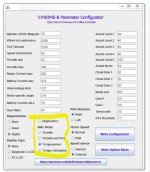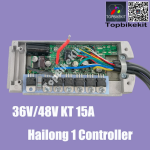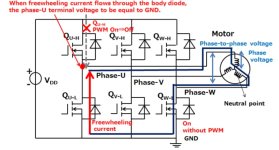This OpenSource firmware/embedded software runs on the BMSBattery S/Kunteng KT motor controllers.
The main advantages of this controllers are:
1. sine wave/"FOC": motors run silent and very efficient
2. cheap: starting at 20€
3. widely available: many online shops sell them and ship to worldwide
4. various sizes e powers: from 0.25kW up to 5kW (72V, 70A, 24 mosfets)
5. supports LCD and Bluetooth mobile app
6. schematic available: important if you want to mod/hack, repair or even build your own controller
7. generic brushless motor controller: can work as a generic brushless motor controller and be commanded by an Arduino or other similar external microcontroller board. This feature is only available when using our OpenSource firmware.
The main advantages of our OpenSource firmware/embedded software are:
1. sine wave/"FOC" max efficiency: motors run silent and very efficient and is possible to tune a parameter to get the best efficiency possible for a specific motor
2. flexible and OpenSource: more than customization, any feature for some specific need can be easily implemented and for free (no need to pay any commercial license)
3. throttle, PAS and torque sensor: all of them are supported
4. LCD3 and LCD5: all of them are supported
5. regen/ebrake: works very well on the direct drive motors
6. motor torque controller/motor current controller
7. motor speed controller
8. generic brushless motor controller: using the UART connection (the same that is used for the LCD and Bluetooth module), this controller can work as a generic brushless motor controller. Can be commanded by an Arduino or other similar external microcontroller board.
Please read the project status, how to install the firmware, history and motivation on his website:
C#ROME-B Home










